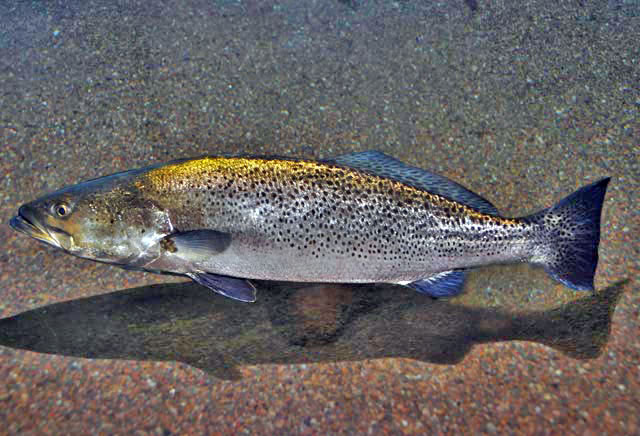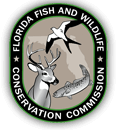Spotted Seatrout
| Life History Parameters | Value |
|---|---|
| Maximum weight (kg) | 7.9 |
| Maximum age (year) | 12 |
| Age at length 0 (year) | -0.26 |
| Age at Maturity (months) | 12 |
| Maximum Length (cm) | 70 |
| Length at Maturity (cm) | 23 |
| Linf. Asymptotic Length (cm) | 68.7 |
| K - von Bertalanffy growth coefficient | 0.32 |
| Natural Mortality | 0.3 |
| - | - | - | Apr | May | Jun | Jul | Aug | Sep | - | - | - |
Habitat and Distribution
This species occurs in coastal waters in the western Atlantic from New York to the southern Gulf of Mexico, where it is associated with sandy bottoms, seagrass beds, oyster reefs, jetties, and estuaries.
Spawning season in the Gulf of Mexico
The spawning season for this species varies by region. However, the most common spawning season is April to September, with peak spawning from May to August.
Spawning Patterns
Spotted Seatrout form resident spawning aggregations of tens to hundreds of individuals adjacent to seagrass beds, in shipping channels and along channel passess, and potentially along the coast in some areas.
Fishing Patterns in Relation to Spawning
Average monthly commercial landings were greater in spawning months than non-spawning months from 2011 to 2015. Recreational landings for Spotted Seatrout are consistent throughout the year with slight peaks in the spring and fall coinciding with the beginning and end of the spawning season. Average monthly landings during spawning months are consistently greater than during non-spawning months
Management of Spawning Aggregations
Spotted seatrout are not federally managed in the Gulf of Mexico. Recreational catch (bag) limits within state waters vary by state and range from 4-25 per day. Minimum size limits exist in all states and maximum size limits exist in all states except MS and AL. Commercial fishing of seatrout is closed in TX and AL, requires a permit in LA and FL and is subject to catch limits. Seasonal commercial closures occur in FL and MS, but not during spawning season. Gear is generally restricted to hook and line in most states.
Research and Management Priorities
The spawning season and reproductive biology of seatrout has been well studied throughout the Gulf of Mexico. However, the variation in density and duration of aggregations across their spatial extent is not well understood, especially in the context of changing environmental conditions. Management efforts should acknowledge estuary-specific differences among populations. Behavior and movement with regards to spawning has not been well described, nor has the impact of anthropogenic noise on the effects of drumming.




